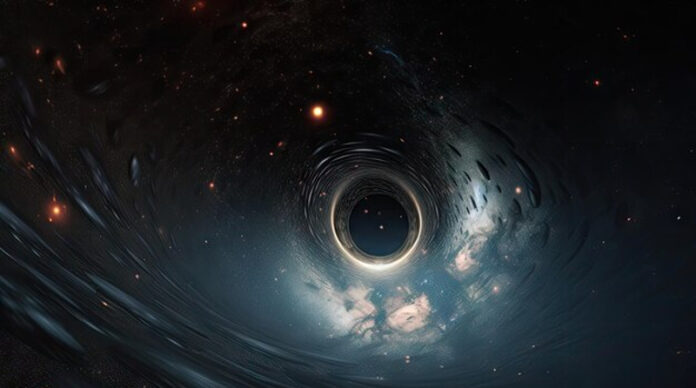Scientists have found a new approach to explore cold dark matter (CDM), a hypothetical dark matter that constitutes 25 percent of the current Universe.
In the current universe, nearly 70 per cent constitutes dark energy whereas 25 per cent is dark matter – about both of which there is scanty knowledge, till date. The nature of dark matter and its interactions with the rest of the matter remains a mystery. Scientists have, so far, been able to study a miniscule area of the Universe which comprises everything — the galaxies, stars, constellations, and meteors to name a few. It is very difficult to determine what the constituents of cold dark matter are. The confusion is escalated because of the two models used to study CDM namely the particle physics model and the cosmological model were not in agreement.
The cosmological model provides a description of the largest-scale structures and dynamics of the universe and allows study of fundamental questions about its origin, structure, evolution, and ultimate fate while the particle physics model describes the most basic building blocks of the universe. The success rate of the standard cosmological model has been good in recent decades.
One of the promising candidates of CDM is the Weakly Interacting Massive Particles (WIMP). Such particle arises naturally in extensions of standard model of particle physics and predict the correct energy density of the CDM for plausible range of interaction strength (WIMP miracle). However, inspite of intensive searches and orders of magnitude improvement in the sensitivity of lab experiments (e.g. Xenon based experiments), WIMP has not yet been detected. In addition, the parameter space suggested by the WIMP miracle had mostly been ruled out.
In a recently published paper by Raman Research Institute (RRI), an autonomous institute of the Department of science and Technology (DST) have confirmed the relevance of WIMP by relaxing certain earlier assumptions and hence proved that theorising dark matter from particle physics was possible.
Professor Shiv Sethi from the Raman Research Institute (RRI) and his collaborator, Abineet Parichha, a former student at the Indian Institute of Science Education and Research, Mohali, proved the relevance of WIMP by considering an unstable WIMP in their analysis relaxing earlier assumptions of the stability of particles. The authors demonstrated that this allows them to satisfy all the existing observational and experimental constraints on the nature of cold dark matter. In addition, this hypothesis is testable from cosmological data. This model is at variance with the dark matter experiments and the research makes it clearer that the assumption of a massive, stable WIMP needs to be altered.
“We considered a model wherein the WIMP decays and one of the decay products of WIMPs acts as cold dark matter at late times. From theoretical perspective, this scenario allows us to expand the permissible space of parameters. Additionally, we show that such a model leaves observable signatures on the Cosmic Microwave Background and the high redshift neutral hydrogen data,” said Prof. Sethi, senior faculty of Astronomy and Astrophysics at RRI.
The dark matter paradigm based on WIMP brought into consonance the standard models of particle physics and cosmology. However, this remarkable agreement was short-lived as experiments to detect cold dark matter in the relevant mass range have failed. The current work proposes viable scenarios which show the two model might still be compatible.
“We found that the WIMP model is still viable under the relaxed assumptions. In addition, the data from space telescope James Webb Space Telescope (JWST) might be indicating more exciting possibilities in the dark matter sector,” Prof Sethi said.
Paper link- https://arxiv.org/abs/2305.10315















